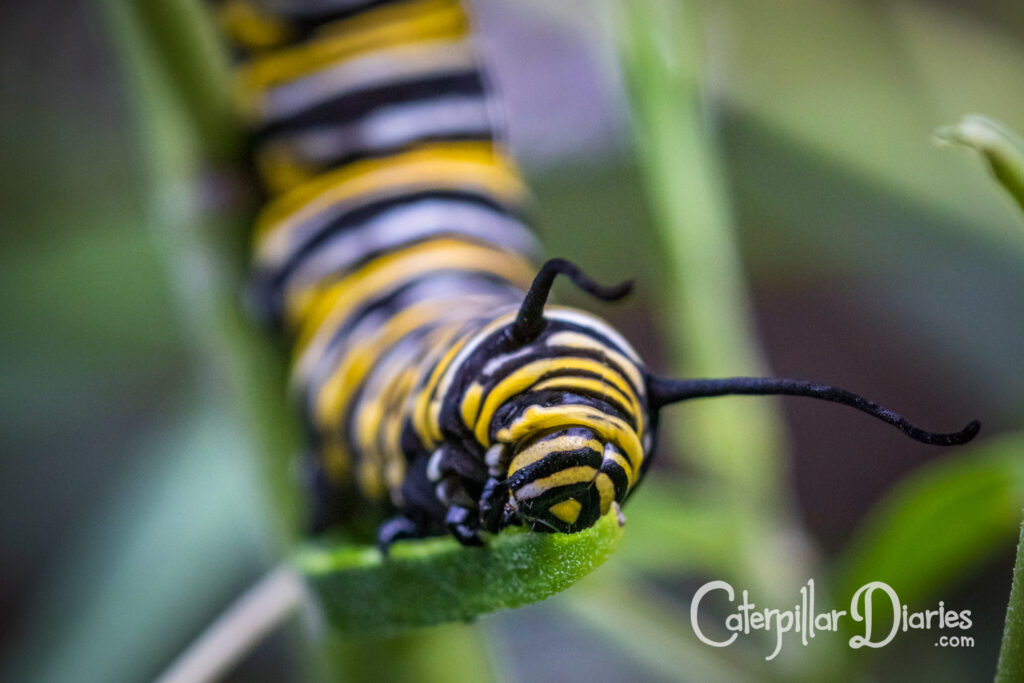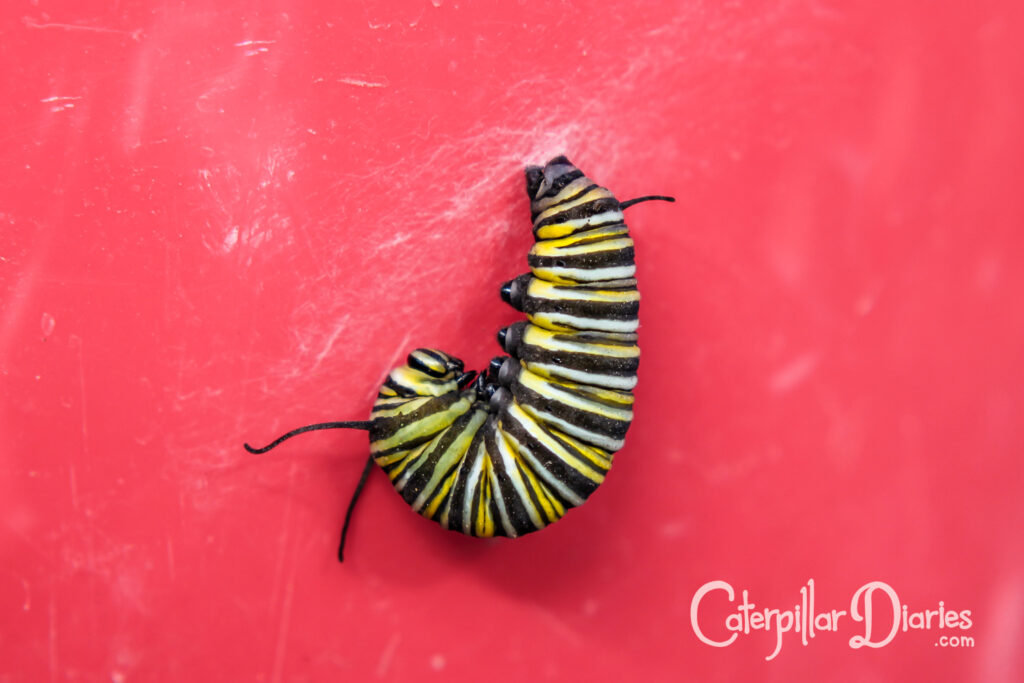Life cycle of the monarch butterfly – introduction

As humans grow from babies to adults, we look very similar in shape and anatomy (body parts) throughout our lives. Our arms and legs get longer, we grow taller, our faces become more oval than round, and so on, but we are still recognisably human. This is similarly so for other mammals (animals that feed […]
Life cycle of the monarch – the caterpillar

The newly hatched monarch caterpillar starts out tiny (2-3mm long), but, over the next nine to 20 days, it will grow to many times that size – up to about 45mm long. By weight, that is 7,000 times its size on hatching! To grow so much, it has to eat – and, as you’ll know […]
Life cycle of the monarch – pupating

When the fifth-instar caterpillar has eaten enough (or the food has run out), it is time for the caterpillar to form its chrysalis (pupate). It finds a suitable spot that will allow it to hang, safe from predators. The caterpillar sits still for a while (up to a day). Then it spins a pad of […]
